Shevlin Sebastian's Blog, page 37
August 21, 2019
In the middle of nowhere
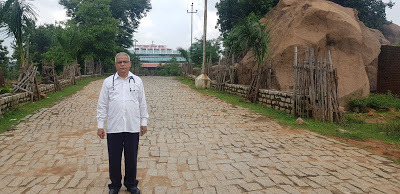
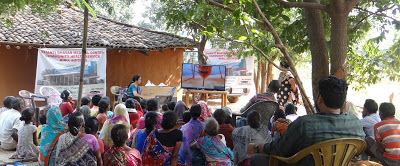
The former principal of the Christian Medical College, Vellore, Dr George Mathew talks about his experiences in Biru, a tribal village of Jharkhand
Pics: Dr. George Mathew; a community meeting taking place
By Shevlin Sebastian
When the 45-year-old tribal, Majhi was brought to the Shanti Bhavan Medical Centre in Biru, Jharkhand, blood was spurting out from a gash in the neck. The nurses rushed to call Dr George Mathew, the general physician and gastrointestinal surgeon. When the doctor came, he was shocked. He pressed hard against the blood vessels to stop the flow, even as Majhi was wheeled into the operation theatre on a gurney.
“The gash had gone through his ear,” says Dr Mathew. “His nerves and muscles were cut. I worked through the night and managed to repair it. But I told the family Majhi may not be able to speak or hear again.” Apparently, Majhi was having a drink with his friend. Then a misunderstanding arose and the friend slashed him with an axe. They carry axes because they cut wood often. Majhi recovered slowly and then went home.
Six months later, there was a visitor in the outpatient department. He was accompanied by his 20-year-old daughter. “He was smiling, but I could not recognise him,” says Mathew. “He pointed to his face and I could see a scar. And then I remembered.”
Majhi had recovered well and could speak properly but could only hear a little. And he was back to farming. Majhi presented a paper packet to Mathew, which contained bananas, and said, “This is my first crop. Thanks to you, I am alive.”
The daughter beamed. And Mathew felt a deep sense of happiness and satisfaction.
Mathew has been in Biru for the past one-and-a-half years. The former principal of the Christian Medical College, Vellore, he retired in 2011 and spent the next few years in Jakarta, Indonesia helping to develop a newly-begun medical college and to start a teaching hospital. But when his friend, Arwin Sushil, the Chief Administrative Officer of the Centre invited him to have a look, Mathew did so. “I saw that there was a need for senior doctors,” says Mathew, who has a doctorate in surgery from the Royal Adelaide Hospital, University of Adelaide. “So I decided to stay.”
Asked about the health issues of the people, Mathew says that because of their poor living standards, many suffer from tuberculosis, malaria, diarrhoea and dehydration. “Owing to their illiteracy and ignorance, they come to the hospital only when the disease is at an advanced stage,” says Mathew. “For some, we can do something. But for the others, it is too late. We can only give a palliative.”
Another problem is that because there are good roads, accidents have become very common. “High speed combined with alcohol is a dangerous combination,” says Mathew. “We get accident victims every day. Many of them come with severe head injuries because they don’t wear helmets. The mortality rate is 25 percent, which is very high.”
Interestingly, the patients are getting subsidised treatment. “There is a government health insurance,” says Mathew. “So, we don’t charge the patient but the government reimburses us if the people are below the poverty line.” In 2017-18, the partially-free treatment was to the tune of Rs 1.9 crore.
The Shanti Bhawan centre has 50 beds and sophisticated equipment. It has two Operating Theatres and X-Ray facilities. It plays an important role in the area because the nearest hospital is at Rourkela, 100 kms away.
Backward and poor
Biru is one of the most backward regions in Jharkhand. The majority of the people are tribals. And their primary occupation is farming. But they use the basic equipment of ox and plough. “Since they depend on the rain, they grow only one crop annually, mainly rice and vegetables like brinjals, ladies finger, tomatoes, chillies, and groundnuts,” says Mathew. “If the monsoon fails, their crops also fail.”
They also collect forest produce like honey, wood and the mahua flower. “This flower is destroying the community because they make alcohol by fermenting it,” says Mathew. “Alcoholism is rampant. Both men, women and sometimes children drink it.”
Interestingly, the terrain is very much like Kerala. It is full of forests with clearings in between and there are small hamlets.
Asked to compare a village in Kerala with that in Biru, Mathew says, “It is like comparing the USA and Africa. The availability of health-care facilities is very low in Jharkhand as compared to Kerala. It is a world apart. The South of India is far ahead as compared to the North.”
Surprisingly, the locals have heard of Kerala because some of them had gone to work as labourers, because of the high daily wages. “They said they were treated well and felt happy,” says Mathew.
Asked how long he would stay, the 69-year-old says, “As long as my health permits, and my family is okay with it.”
The family includes his wife Alice, a gynaecologist, who is on a temporary assignment in Brunei, till December, while his son Sidharth, 35, is a Bengaluru-based lawyer. Another son, Anirudh, 32, is a neuropsychologist at CMC, Vellore.
In conclusion, Mathew says, “This stint has provided me with a lot of happiness. I was able to provide medical care in an area where there is nothing. Also, I have experienced the joy of saving people who would have died otherwise.”
(The New Indian Express, Kochi)
Published on August 21, 2019 23:18
August 19, 2019
Join the pyramid and get swindled

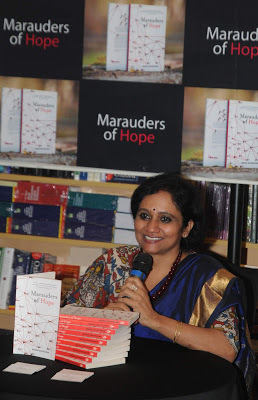
Aruna Ravikumar’s book, ‘Marauders of Hope’ focuses on the many multi-level marketing scams that are taking place in India
Pics: Illustration by Tapas Ranjan; Aruna Ravikumar
By Shevlin Sebastian
The Hyderabad-based journalist Aruna Ravikumar would anchor a weekly TV programme on a regional channel where guests would discuss political and social issues. On one show the topic was Multi-Level Marketing (MLM) firms.
Participants included a representative from Amway, a multi-billion dollar company, a victim and a member of an NGO. “At that point of time, a lot of these MLM companies were being busted in Hyderabad,” says Aruna, while on a recent visit to Kochi.
During the channel discussion, Aruna was intrigued by what she heard. The business had impacted a cross-section of society: rich, middle-class and poor, the educated and uneducated, urban as well as rural. And yet, it had not been a major subject of discussion. So, when the TV channel closed down last year, Aruna decided to do research on the subject.
And this has resulted in a 166-page book called ‘Marauders of Hope’ (Rs 299), which has been brought out by the publishing arm of Crossword Bookstore called ‘The Write Place’. It is a clear and lucid look at the subject. The topics include beginnings, causes (liberalisation), the anatomy of the schemes, the ruined relationships of the victims, precedents, landmark court decisions, and the way ahead.
What comes as a surprise is the companies that have been accused of exploiting people by Aruna include household names like Amway, Tupperware, Herbalife and Mary Kay.
The modus operandi of the firms is very simple. “Investor No. 1 at the top of the pyramid recruits six new members at Rs 100 each earning a profit of Rs 600,” says Aruna. “These six recruits will then recruit six new members, each earning a profit of Rs 500 (minus the initial investment of Rs 100), and adding 36 people to the pyramid. Now, the 36 people, to earn any profit will have to recruit 216 people who subsequently must recruit 1296 people and so on. This pyramid quickly becomes unrealistic. Practically speaking, anyone below the fourth and fifth level is likely to lose 100 per cent of his investment.”
In fact, the only investor who is guaranteed a return is the one at the top of the pyramid. Amway ‘Diamond Distributor’ Ashok Reddy, who is from Hyderabad, has over 2000 people below him. But the people above him are only two Americans Bill Britt and Dexter Yaeger.
“They make commissions on all recruitments and purchases of Ashok,” says Aruna. “So these Americans are getting an income from India, without paying any tax.” At this moment, there are more than 4 lakh Amway distributors, like Ashok.
Here is another example: In early 2000, a company called Frontier Trading started retailing Japan Life mattresses in India at Rs 1 lakh a piece when the actual price was less than Rs 5000. The company representatives said that if you sleep on it, a lot of your ailments would be cured. It was an MLM scheme where buyers had to recruit new buyers.
The company sold Rs 800 crore worth of beds. Astonishingly, in a small town, Hubli in Karnataka beds worth Rs 82 crore were sold in a single month, “Soon complaints began to pour in that the bed had no healing powers,” says Aruna. “And the scheme collapsed, but in the process, many people lost their money.”
However, these companies argue that they are different from pyramid schemes because members can earn by selling their high-priced products. However, the odds are high when you start selling their products. Each member is expected to buy a certain number of products every month. For every purchase, you get 50 PVs (Point Value). On every PV, you get a bonus. But you get a bonus only after you reach 200 PVs. So, the lower the quantity you buy, the lower is the bonus. As a result, those who are at the bottom of the network, in terms of purchase, make no money at all.
“The argument that these are not pyramid schemes has been put forth time and again, to arm-twist the judiciary,” says Aruna. “No one is fooled by this argument but it is bandied about, helping the companies to win lawsuits and explore newer markets. And continue their exploitation. The result: too many victims.”
A Village Revenue Officer Chakradhar was induced to become an MLM distributor. So, to recruit people, he tried to cajole his friends, family and subordinates. Many did not join, so Chakradhar put up the money himself. But despite his investments, he did not get any bonus. People began to avoid him, as recruiting more to the network became an obsession. But eventually, the pressure got to Chakradhar and he committed suicide.
Aruna says that stringent laws are in place, especially The Prize Chits and Money Circulation Schemes (Banning) Act, 1978. “But nobody has acted on it, thanks to the deep pockets of the MLM firms, even though the losses are pegged at Rs 7 lakh crore,” she says. “The only way is to close the loopholes, but do governments have the will to do so?”
In conclusion, Aruna gives some simple tips: “Do not trust schemes that promise you very high returns. Do not join projects promising enrollment as they are all pyramid schemes in disguise. Don’t fall prey to marketing techniques employed by close friends and relatives as the ‘quick money’ bug can become lethal. When you become aware, the less are the chances of becoming a victim.”
(The New Indian Express, Kochi and Thiruvananthapuram)
Published on August 19, 2019 02:02
August 16, 2019
Strokes of awareness
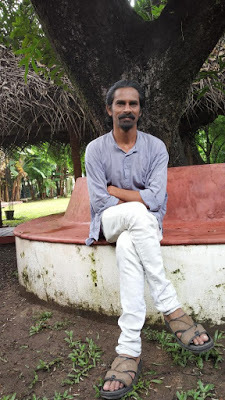

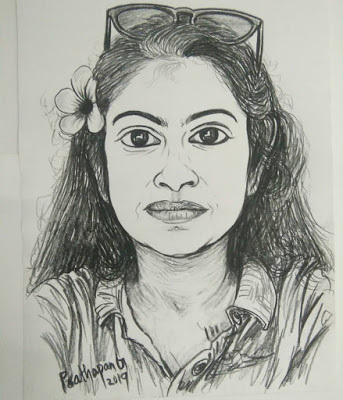
The Kochi-based artist G Prathapan’s works on plastic waste were displayed at the Kaarisilta Biennale in Finland recently
Pics: G. Prathapan; the works at the Kaarisilta Biennale in Finland; pen portrait
By Shevlin Sebastian
On most evenings, G Prathapan cycles down to the David Hall Art Gallery in Fort Kochi, which is less than a kilometre from his home. He is dressed like an artist: a loose shirt, tight trousers, sandals and a satchel across his shoulders. It contains his work materials: micro-tipped pens, and A3 paper.
There are visitors, both foreign and local, who come to see the artworks at the gallery. Later, they hang around at the restaurant in the back. When they are told that Prathapan does caricatures as well as portraits, some opt to sit in front of him.
Prathapan smiles and says, “All of them want me to do it within five minutes. I could, but it won’t be a good job.” Instead, he takes half an hour. Sometimes, it can go up to an hour. By then the subjects are anxious. They scratch their nose, twist their lips to one side, crack a knuckle, roll their eyes, or shake one leg continuously.
The people include a mix of single men and women, sometimes it is a couple, sometimes a family of three, sometimes two female friends, or teenagers, both boys and girls, as well as children. It is in black and white and looks remarkable. Most illustrations seem very alive, as if at any moment they could step out of the paper and become flesh and blood people.
Prathapan smiles when he hears that. “Thank you,” he says simply. There are other reasons for Prathapan to feel happy. He has just participated for the second time as an invited artist at the Kaarisilta Biennale in Finland (June 26-August 4). “Eight of my works were on display,” says Prathapan. Again, these are drawings done in black ink on A3 size paper, all part of a series titled, ‘Trapped Earth by Plastic’.
In one of the images, there is a plastic globe near the bottom of the sea. “Somebody has thrown it away because it was broken,” says Prathapan. “We are now in the throwaway culture. If there is slight damage to anything, we tend to get rid of it. The globe is giving company to the numerous plastic bottles in the rivers, seas and oceans. There is also a plastic packet on the ocean floor.”
In another image, Prathapan has drawn a plastic packet, with just the tip above the surface of the water. “It is like an iceberg,” says the artist. “Only 1/7th of an iceberg is above the surface. The people only see the surface of the oceans. They don’t see what is happening underneath. So they think there is not much pollution. But what I am trying to say is the opposite: there is too much of pollution below the surface. The oceans are a dumping place. We don’t realise that when we throw a plastic packet on the road, it eventually reaches the ocean.”
In another striking drawing, Prathapan has drawn the earth inside a plastic packet. “The whole world is inundated with plastic,” he says. “As a result, none of us can breathe. There is a fish which has got stuck inside a plastic packet. On the seashore, I have drawn a large city, with fumes coming out of the factories. There is pollution in the seas as well as the land.”
In the earlier edition of the Biennale, Prathapan’s topic had remained plastic waste. But at that time, he showed the waste in and around Kochi. “Waste is a topic that I am deeply interested in,” he says. “That’s because environmental damage is the biggest threat facing mankind.”
Says Johanna Immeli, the curator of the Biennale, “The jury was very impressed by Prathapan's drawings. The subject matter of plastic waste is very important. It is a problem all over the world. This appears in the news often. Many visitors liked Prathapan's works. They stood and observed the drawings for a long time. It made them think, they told me later.”
Prathapan passed out with a BFA in painting from the RLV College in Tripunithara. He has been a full-time artist, since 2007, and has participated in state and national solo and group exhibitions over the years. He has won a few state awards.
Prathapan says he would now be focusing on the environmental damage caused by ships and tankers. “When a ship leaks oil as it happened with a Chinese ship, the oil spreads for kilometres together,” he says. “It will damage the sea for a long while.”
He pauses and says, “As an artist, I must bring awareness. The people should awaken and so must our leaders.”
(The New Indian Express, Kochi)
Published on August 16, 2019 00:24
August 11, 2019
Talking about my life


Film-maker Ranjan Kamath’s ‘Mitra Tantra -- Archive of Personal Narratives and Oral Testimonies’ allows the eminent and the ordinary to reminiscence about their lives
Pics: Film-maker MS Sathyu; film director Ranjan Kamath
By Shevlin Sebastian
Noted film-maker MS Sathyu is sitting on a wooden chair in his living room at Bengaluru. Behind him is a sofa which has large pillows. On the cream-coloured walls, there are framed paintings. It is a tranquil setting. But Sathyu, clad in a grey waistcoat and trousers, looks sombre.
Raising a despairing hand, he says, “I blame [late Prime Minister] Mrs Indira Gandhi for all what is happening now. She became corrupt. When she was Pandit Jawaharlal Nehru’s daughter, she was all right. But the moment she entered politics and became the President of the Congress Party, and the first Communist government was installed in Kerala, under EMS Namboodiripad, she destroyed it. And later, when she lost the elections, she brought in the Emergency. She was mad for power. Now all the politicians have become corrupt.”
He pauses and then says, “The assets that they declare during election time, I wonder where did they get that much money. They only talk in crores. That poor fellow, [Manik] Sarkar in Tripura, he does not even have a car. He has no bank balance. He has no money. And he was the Chief Minister for 20 long years. That kind of integrity is not there anymore.”
Sathyu was a participant in the ‘Mitra Tantra -- Archive of Personal Narratives and Oral Testimonies’ organised by film-maker Ranjan Kamath. Some of the other participants included author Shashi Deshpande, artist Balan Nambiar, scientist Prof. CNR Rao, historian S. Theodore Baskaran, filmmaker Girish Kasaravalli, Captain CR Gopinath, father of low cost aviation, and many others.
The reminiscences are free-flowing. Participants take anywhere between 4 and 7 ½ hours. “The stories include events from their childhood, school and college life, careers, failures, day-to-day life, relationships, friendships, collaborations, witnessing the Partition and Emergency first-hand, growing up in Bengaluru, and views on marriage and family,” says Ranjan. “It is a fascinating variety of topics.”
Ranjan gives them a brief before the shoot. “I tell them there is nothing too insignificant or inconsequential,” he says. “I want them to talk as they feel. It is a liberating experience for them to talk spontaneously.”
The result is heartfelt. Many times the sincerity, truthfulness and vulnerability shine through.
Some stories can be agonisingly sad. Kishore S Rao, the chairman of Karunashraya, a cancer hospice in Bengaluru, recounted the story of a house painter, Basavaraj (name changed), who was in the final stages of lung cancer. “He kept asking the nurses, doctors and staff, ‘How much do I pay?’” says Kishore. “We told him there are no charges. But Basavaraj found it difficult to believe. Because everywhere he went, whether it was to a government facility or private hospital, he had to pay, either over or under the table.”
Basavaraj said, “It is impossible that this place is free. How much do I pay?”
A nurse again said, “You have to pay nothing.”
So, he said, “I have to do something to repay.”
Then he made a list, of paints and brushes and asked the nurses to get the material, so that he could paint the walls for free. The hospice bought the material just to make him feel good. “Because, by then, he was too weak to do anything,” says Kishore. “In fact, he passed a few days later.”
As he said that tears rolled down Kishore’s face.
When Ranjan saw that, he remembered his own sadness. His mother, Cecelia D’Souza, a former teacher passed away, on May 29, 2017, at the age of 79. “She died within 30 days of discovering that she had liver cancer,” he says.
When he gazed at his mother, Ranjan suddenly realised that he had lost his chance to record her memories. “That’s when I realised that if I can’t do it for myself, I must do it for others,” he says. “For years, people have been passing away -- great singers, artists, actors and writers. And I realised that nobody has preserved their wisdom and experience. So that was the immediate trigger.”
Ranjan had already seen a format. His friend, the British film-maker Christopher Sykes has done a project called Web Of Stories. “Some of the greatest achievers, like author Vladimir Nabokov, actor Richard Pryor and the writer Philip Roth shared their life stories,” he says.
But Ranjan does not want to do it only on the eminent. “That would become too exclusive,” he says. “So I am also looking for ordinary people to tell their stories.”
But the immediate problem is funding. So far, he has spent a few lakhs of rupees doing the recordings. “What is driving me is the sheer joy I experience when I listen to the stories,” he says. “But I want people to own this and contribute financially to this project.”
Ranjan is also looking for corporate as well as private funding. All the recordings will be put up on a website as well as on Facebook, Twitter, YouTube and Instagram. Interestingly, the clips that he has put up so far, range from 90 seconds to three minutes only.
“That’s the attention span these days,” he says, with a rueful smile. So, for Sathyu, there are 78 videos, most with an average time of one minute. “But if you listen to all, it is like getting a university degree, in terms of knowledge and insights,” says Ranjan.
One insight is about the relationship between the sexes. “Husband and wives speak separately,” says Ranjan. “The idea is that you get different perspectives of the marriage. But what I have noticed is that there is a bitterness and a suppressed anger which comes up between the spouses.”
This could be seen clearly in the women, those who were very accomplished and had to give up their careers because their husbands were equally accomplished but they are living in a patriarchal society, so they had to give up their careers and look after the family and home.
“This has certainly come through in women who are in their seventies and eighties,” says Ranjan. “Marriage takes on different dimensions. There are changes and adjustments to each decade. Spouses become either friends or partnerships. There is some sort of love. But if you ask them individually whether they love their spouses, they might say, ‘I don’t know’.”
There were other interesting insights. “Women are more forthright in expressing their emotional side,” says Ranjan. “For men, the thinking mind comes through. There is a gender divide. Men want to share their minds and their philosophies. Women are more comfortable sharing their emotions. Men took a lot of time to tap into that. This could be why there is a problem between the sexes.”
But what was clear in the interviews is despite the marital strains, the men were very appreciative of the roles of their spouses. “Most of the menfolk have unequivocally said that were it not for their wives, they would not have reached where they are today.
Spouses gave unconditional support particularly for those who were in the creative fields. It enabled the men to go ahead and do what they wanted to do, without worrying about the household, or that kind of thing. The partnership was critical. The women, themselves, could have had a great career but they chose to support their husbands. The men were appreciative of that.”
(An edited version was published in Sunday Magazine, The New Indian Express, South India and Delhi)
Published on August 11, 2019 23:39
August 10, 2019
Enjoying the moment
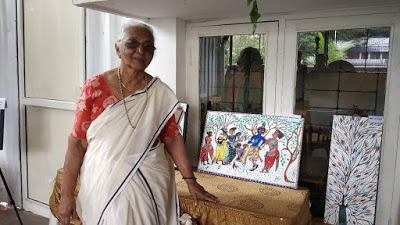
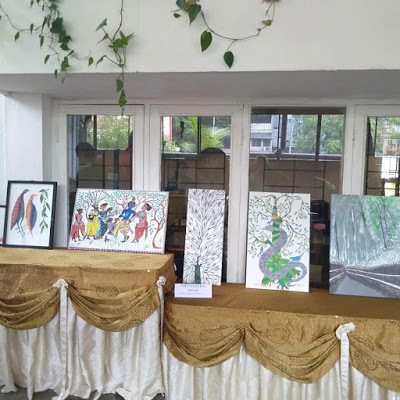
Sara Caleeckal, at 78, has just participated in a painting exhibition. A cancer survivor, she is also a poet and helps troubled juvenile delinquents through art therapy.
By Shevlin Sebastian
At the East India Street Cafe, at Panampilly Nagar, the 78-year-old Sara Caleeckal stands out because of her silver hair and white saree. Her friends, the budding artists Thebzeera Valiyakath, Priyam Saini, Amal Joy and art impresario Reema Singh are all in their twenties and thirties. But along with them, Sara is showcasing her paintings at an exhibition where amateur talent has been given an opportunity to showcase their works.
Sara has a painting titled, ‘Dance of a Dragon’. It shows a dragon curled up like a snake around the trunk of a tree while a squirrel rests near the tail of the animal. It has been done in the distinctive Gond tribal style. To learn this art form, Sara went to Chennai to attend a workshop by Biennale artists Subhash Singh Vyam and his wife Durga Bai, who are from Madhya Pradesh.
Another work, of the blue-coloured Lord Krishna and Radha, with the gopis at one side, was done in the Madhubani style. The third is a simple abstract painting of a bamboo grove. If Sara sells a work, 20 percent is set aside for poor cancer patients or underprivileged children.
On most days, at her home, at Irumpanam, when she awakens, if she feels happy, Sara will set up an easel and do a painting. On other days, when she feels a bit low, she sits down and writes a poem.
Here is one called ‘Storyteller’:
I tell stories with letters, with words, with songs, with verse, with lines, with curves, with dots, with strokes, with pencils and pens sharper than swords, with black charcoal, with while chalk, of myriad hues of heaven, earth and seas, of laughter and tears, of excruciating ecstasy, of divine pain…
And on other days, as a member of the Art Outreach Society, she goes to the Kakkanad District Prison, where she teaches art to the juvenile offenders as well as the women. “Some of the boys are unbelievably talented,” says Sara. “I am told they are lured into crime, as drug carriers, because of the easy money. They want to buy smartphones but their parents cannot afford it. Some belong to very good families.”
Not surprisingly, some of their artworks show blackened faces, an all-seeing eye and fences with sharp pointed ends, which has a trail of blood going like a band across it. “They feel much better after they do their paintings because they can express their anger or frustrations safely,” says Sara.
Meanwhile, in her own life, Sara had been a teacher for decades, in Mumbai, Tanzania and Chennai. An arranged marriage to John Mammen, a Naval officer in 1964, resulted in three children, two daughters and a son. Unfortunately, it was a difficult relationship and in 1988, the couple separated.
Thereafter, Sara became a single mother. “For two years, I was ashamed to show my face in society,” she says. “I went through a period of depression. The fact is when trust is no longer there between the spouses, there is no point of staying together. However, it is the children who bear the emotional damage.” Any hope of reconciliation ended when John passed away in 2000.
“Life goes on,” says Sara. After her teaching career ended, Sara began a career of doing medical transcription online. Her knowledge of medicine helped her to detect a lump in her breast. A check-up at the Christian Medical College at Vellore revealed that it was cancer. “Instead of chemotherapy I opted to remove the breast,” she says.
And Sara learned some quick lessons. “Cancer made me aware of my mortality,” she says. “Before that, I would postpone things for tomorrow. Now I tell myself, ‘Don’t wait for tomorrow, do it right now’.”
What she does regularly is to go for a swim every evening at a local school. She swims for one hour and prefers the backstroke. “I feel so rejuvenated,” says Sara. “This is the best exercise at any age. To be honest, I feel more at home in the water than on land. That’s because I have been swimming since the age of five.”
Finally, when asked to give tips on how to lead a fulfilling life, Sara says, “Self-love is very important: love your body, mind and soul. Most people do not like themselves. Do any activity that makes you feel feel passionate. And you will always feel young at heart.”
(The New Indian Express, Kochi and Kozhikode)
Published on August 10, 2019 01:51
August 9, 2019
A new motif for National Handloom Day
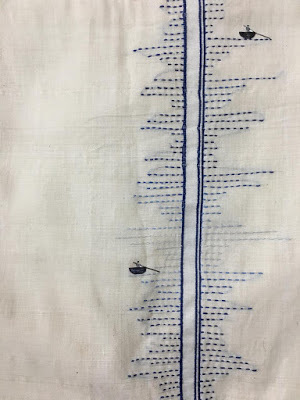
By Shevlin Sebastian
Among the crafts of India, handloom stands a league apart. It may be the most complex, but the most poetic as well. The real concern on The National Handloom day, on August 7, is to save the art form from extinction by evolving into new forms and designs.
The first in the series is a mapping of the rhythm of the loom. "The back and forth movement of the wooden shuttle laying the weft of the fabric creates a rhythmic sound," says social entrepreneur Lakshmi N Menon. "The form of that sound wave translates for us into a design motif. That is the ‘Heartbeat of the Handloom.’ Heartbeat is the most rhythmic sound expression in any living being. And we just discovered the heartbeat of every fabric made on a loom!
The Heartbeat of Handloom intends to create a new paradigm in design and the process. Heartbeat aspires to redefine the socio-cultural and anthropological aspects through continuous engagement in both theoretical and the practical front.
It is also a design that connects the weaves and the waves of the mega flood of Kerala of 2018. "I want to aspire for a new social fabric by weaving communities together just like the unity and solidarity that we displayed during the harrowing times with the floods," says Lakshmi, who is the lead designer of this project. "The elements of the design include the texture, form, mood, space and the line. The shuttle in the loom resembling the boat is weaving friendship between the weaver and fishermen community."
This collection was part of the ‘Make friendShip’ campaign initiated to express gratitude to the fisherfolks who saved 65000 lives during the floods.
(The New Indian Express, Kochi)
Published on August 09, 2019 03:08
August 6, 2019
“The youth are one-dimensional”
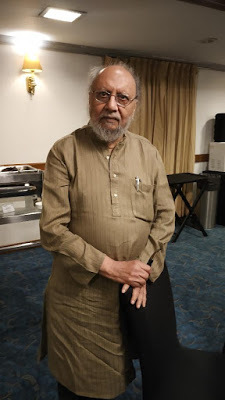
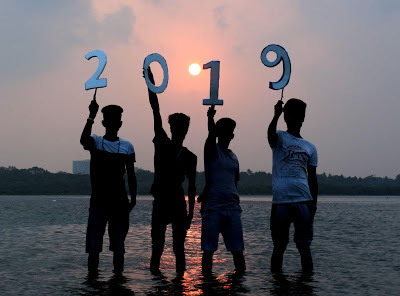
Eminent social scientist Ashis Nandy talks about the mindset of the youth, the state of the minorities and online attacks on him
By Shevlin Sebastian
Eminent social scientist Ashis Nandy was careful about his sugar intake. At the restaurant of the Le Meridien, he put only half a sachet of the sweetener in his tea. “At 82, I have to be careful,” he says, with a smile.
Nandy was in Kochi because he was a featured speaker at the ninth annual conference on Metaphysics and Politics, organised by the Backwaters Collective.
Although he looked calm, he was in the midst of a media storm having been one of the signatories among the 49 eminent citizens who wrote a letter to Prime Minister Narendra Modi on July 23 expressing their alarm at the lynchings taking place all over India.
“Online trolls have been attacking me non-stop,” says Nandy. But what particularly upset him was when veteran directors Adoor Gopalakrishnan, Shyam Benegal and Aparna Sen were attacked. “Adoor is such an eminent film-maker,” he says. “And what about Shyam? He has done so much for the country. Shyam has done a film on the constitution of India and a wonderful series called ‘Discovery of India’. He is not a self-centred Bombay filmwallah. As for Aparna, she has also done fantastic work and comes from a distinguished family. Her family has been associated with the freedom movement for generations.”
Asked whether he was scared, Nandy says, “I am not, but my family is worried.”
Interestingly, he says, the brutalisation of society is not an overnight phenomenon. “There was barbaric violence during the Partition of India (1947),” he says. “This violence has continued, in different forms, over the past seven decades. Something has gone wrong.” Today, nobody reacts if a father molests his daughter, a husband kills his wife, a son hits his mother, or a man is lynched. “These were aberrations earlier, but are now regarded as normal,” says Nandy. There is a siege mentality in the country. “The majority community has the fear of being outnumbered,” says Nandy. “How can 82 percent of the population be outnumbered? So many people have written saying this is so. It’s unbelievable.”
As for the minorities, there is an erosion of trust. “But still, they continue to believe in the Indian state and the judiciary,” says Nandy. “In their day-to-day life, they can get things done. So, life is going on. If Hindus and Muslims can live together despite the barbarity during Partition, I am sure they will be able to live together now.”
Asked whether the next generation can make a difference, Nandy is doubtful. “Many youths take to science and technology and tend to go to IIT (Indian Institute of Technology), or IT (Information Technology),” he says. “These are disciplines where you can score very high marks. You can get good jobs. And they also tend to do very well in the civil service exams. So a large number of IAS and IPS officers come from this sector.”
The students are brilliant, but they lack a liberal education. “They are one-dimensional, and have no idea about social values,” says Nandy. “What are the conditions of democratic governance? What are the limits of behaviour in the public sphere? They are ignorant of literature, sociology, psychology, arts, history, and philosophy. A study of these subjects would have developed the finer aspects of their self. As a result, today, young administrators have no empathy for the common people. It is only about data and statistics.”
(The New Indian Express, Kochi and Thiruvananthapuram)
Published on August 06, 2019 22:44
On the divine path
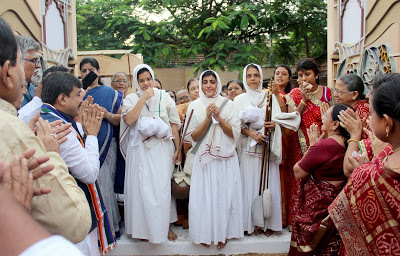
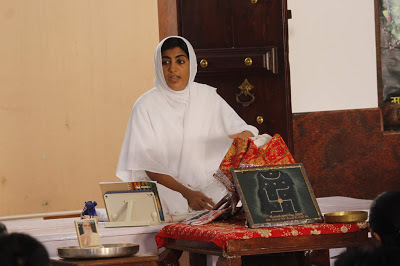
Monk Sadhviji Sayampurna Shriji, who will be spending the next four months at the Jain Temple at Mattancherry, talks about her life
Pics by Jayant Pithadia
By Shevlin Sebastian
On the street of Mattancherry, youths in scooters hold aloft a banner welcoming the Jain monk Sadhviji Sayampurna Shriji to Kochi. A few youngsters are banging on drums and cymbals. The scooter-borne youths are followed by men, of varying ages, wearing a scarf across their shoulders. A few are waving the Jainism flag, which has five colours: red, yellow, white, green and blue.
The procession stops. A few girls, wearing white salwar kameez, do the Maharashtrian folk dance called lezim. A band provides the music. Suddenly, somebody shouts, “Chalo” (let’s go) and the procession resumes.
All this is part of the welcome ceremony called Chaturmas Pravesh, on July 11, for Sadhvivarya. The monk has come for a four-month stay at the Jain Temple. During the monsoon season, monks and sadhvis all over India don’t travel as numerous insects come out at that time. So, to uphold ahimsa -- not to cause harm to even the tiniest living being -- they remain at one place.
The Sadhvivarya, accompanied by two disciples, was coming from Pondicherry. Over several months, they walked, because they are not allowed to use any vehicle. They also avoided footwear because they did not want to harm any living being. On the way, they stopped at numerous Jain temples, ashrams and schools, for several days at a time, giving talks, doing meditation, and advising people of other faiths, too. On an average, they walked about 10-12 kms a day. “We usually started at 5.30 a.m, and by 8 a.m., we would stop for the day,” says Sadhvivarya. “Thus, we did not get tired.”
When Sadhvivarya entered the spacious temple at Mattancherry, very soon, she felt very happy. “The vibrations are very good,” she says. “The temple is very spacious too.”
Sadhvivarya quickly settled into her daily routine. The trio gets up at 3.30 a.m. and does prayers, meditation and devotion to the Tirthankaras (Jain gods). Because they do not cook food or are not allowed to eat food prepared specially for them, around 48 minutes after sunrise, they visit the different Jain houses in the area to receive vegetarian food. This practice is called goachari.
“From each house, we take little so that the family members do not have to cook again,” says Sadhvivarya. “We go to a few houses to get enough food. Then we bring it back to the temple.”
There is a prayer over the food before they sit down to eat. At 8.30 a.m., for one hour, Sadhvivarya gives a talk (pravachan) to devotees. The subjects include the grace of the divine, how to connect with the Almighty, the uniqueness of karma, and how to live peacefully, balancing the spiritual and the practical.
Throughout the day, Sadhvivarya does meditations, prayers and rituals. In the afternoon, she gives another talk, followed by a public prayer in the evening. Sadhvivarya has gone all over India inspiring and motivating people.
And it seems she was destined for this work. Right from her childhood, she wanted to become a monk. This feeling strengthened when she met her guru, Acharya Bhadraguptasurishwarji MS. “I used to read his books on Jainism when I was in Class 8,” she says. “Once he had come to Ooty for a month’s stay.”
The sadhvi, the daughter of a businessman, who is from Rajasthan, grew up in the hill station. She did her schooling from Nazareth Convent High School, her Class 11 and 12 from Girl Memorial College and her BA in English literature from Emerald Heights College for Women. It was during this time, she broached the idea to be a monk. Expectedly, the family opposed to the idea. “My mother felt that I was too delicate and sensitive to walk on this path,” says Sadhvivarya. “My father and elder brother were very attached to me. They said, ‘No, no, we will get you married’.”
But Sadhvivarya prevailed. She says, “I had no doubts because it was an inner calling.” And Sadhvivarya took her diksha (renunciation ceremony) at Dholka, 48 kms from Ahmedabad on January 25, 1998. The congregation consisted of sadhus, sadhvis, shravaks and shravikas (Jain laymen and women).
“It lasted two hours,” she says. “There was one shravak from Mumbai who took diksha along with me.”
It was after her renunciation that Sadhvivarya went for further studies. Eventually, she did her PhD from the Jain Vishwa Bharati Institute (a deemed university) at Ladnun, Rajasthan. “My thesis, ‘The Concept of Divinity’ was based on a work, ‘Vitaraga Stotra’ by [Jain scholar] Acharya Hemachandra, which defined the divine qualities of the Tirthankaras,” says Sadhvivarya. “I also did a comparison of Jainism and other religions.”
Asked whether it is a difficult life, she says, “My life is tranquil, beautiful, serene, and I am on the precious path of merging with the divine,” she says. And her parents are also happy. “During Chaturmas Pravesh, they usually come to visit me,” says Sadhvivarya. “So, they will be coming to Mattancherry soon.”
Box
The five vows of a sadhvi are:
Ahimsa Mahavrat: Vow of absolute non-violenceSatya Mahavrat: Vow of absolute truthfulnessAsteya or achaurya mahavrat: Vow of absolute non-stealingBrahmacharya Mahavrat: Vow of absolute celibacy Aparigraha Mahavrat: Vow of absolute non-attachment
(Published in The New Indian Express, Kochi and Thiruvananthapuram)
Published on August 06, 2019 01:20
August 5, 2019
When a run-down government school became top class


A recent University of Glasgow report focused on the philanthropic work done by the Faizal and Shabana Foundation at the Government Vocational Higher Secondary School for Girls at Nadakkavu, Kozhikode
Pics: Faizal E Kottikollan and his wife Shabana; the entrance to the school
By Shevlin Sebastian
At 5.30 a.m., business magnate Faizal E Kottikollan heads to the beach at Kozhikode. He likes to see the roaring waves, as he goes about doing stretching exercises and embarks on a jog. The steady wind also relaxes him and clears his mind, as he plans for the day ahead. After an hour-and-a-half, he returns, but always stops at the Government Vocational Higher Secondary School for Girls at Nadakkavu.
On a recent morning, when he stopped at the gate, a group of women were standing there. They rushed towards him and said, “Mr Faisal, where is [your wife] Shabana Maam?” He told them his wife was in Dubai. Then one of them said, “We just wanted to thank you for what you have done to this school. Every day we walk on the ground and pray for you.”
Unusually, the school is open for outsiders. People can come and use the grounds till 8 a.m. “Almost 70 to 100 women come every day because the school is for the benefit of society too,” says Faizal. “Some go for a walk. A few have yoga sessions.”
The school has become famous all over Kerala, thanks to the extraordinary infrastructural as well as the holistic development of the students. This was funded by the Faizal and Shabana Foundation. With the help of MLA Pradeep Kumar, the organisation spent a whopping Rs 20 crore on this one school.
This happened five years ago. But the 126-year-old school sprang back into the limelight in March when the University of Strathclyde, Glasgow published a glowing case study recently called ‘Faizal and Shabana Foundation: A Venture Philanthropic Approach to Education’.
On a cloudless July morning, as one walked in, there was a pergola in front which has leaves entwined around the wooden feel pillars and going all the way to the roof. To the left and the right are green plants.
In the atrium of the main building, there is a striking mural painting on the wall, going all the way to the first floor, of a tree with numerous leaves and thick roots. “This is known as the ‘Tree of Knowledge’,” says Shabana Faizal. “Every leaf represents a child and it is like a mother tree.”
Interestingly, while climbing up the stairs to go to the first floor, the windows are at a lower height. “This was done deliberately,” says Shabana. “This was made at the height of small children so that they can look out and see the trees.”
The classrooms are airy and bright and painted in soft colours of beige, yellow and mauve. There are large chemistry and biology labs. “Some university students told us it is bigger than the ones found in their college,” says Dr Joseph Sebastian, Director-Faizal and Shabana Foundation. And the indoor recreation area, with a high roof, is astounding. Painted in a deep blue, you can play volleyball, basketball or badminton.
At one side, there is a space where weight-lifting and stretching exercises can be done. There are drawings of sportspeople running, swimming and jumping on the walls. High wire-mesh windows ensure that there is good air circulation. “Can you imagine this is a government school?” says Joseph.
The mess is also large, with tables and plastic chairs to seat 1200 students. Canteen manager Unnikrishnan says, “Before the makeover, the canteen was so small that only three or four teachers were able to sit inside. The students had their lunches on their desks.”
At one side, there is an all-weather astroturf. This was brought from New Zealand at a cost of Rs 1 crore. “Faizal said there should be no compromise when it came to quality,” says Shabana.
The change in the mindset of the students has been profound. “I feel proud to say that I am studying at Nadakkavu,” says Reena Das, a Class eight student. “Earlier, when I would leave for school my mother wouldn’t even say bye. Now, she comes to the door every time. In the buses, we are also treated with respect because we have been provided with very good uniforms.”
At his plush air-conditioned office, Faizal smiles when he hears this. “The Nadakkavu school has sparked a revolution,” he says. Then he opens a New Indian Express newspaper and points at a June 26, 2019 headline. It says: ‘Development work on 36 schools nearing completion’. “They are all following our model,” he says.
Today, in Kerala, there are 141 government schools similar to the one in Nadakkavu. “We also did it in a school in Tamil Nadu,” says Shabana. “The Delhi government came to see our model and are implementing it.” Celebrities who came to see it first-hand included music composer AR Rahman, former cricketer Brett Lee, former footballer Ronaldinho and Mollywood actress Manju Warrier.
A hugely successful businessman in the Gulf Faizal sold his standalone valve casting foundry, one among the top three in the world, in 2012, to American business company Tyco for a cool $400 million.
“Shabana and I thought that we should make a difference with this money,” says the 54-year-old. “People with the correct attitude and intentions can do that. Earlier, businessmen thought about society and its social requirements. Nowadays, they only think about themselves. That is the difference between the old and the new school. And I am happy to say I belong to the old school.”
He also understands the importance of education. “Education was the main driver in our family,” he says. “Thanks to my parents, we are an educated Muslim family which was not that common at that time. I have three masters in total: engineering, MBA in finance and marketing, and industrial engineering, the last two of which I got from the United States. I worked in the US, travelled the world and seen how it functions. And I realised that without education it is very difficult to do well in life.”
He also feels India is sitting on a powder keg. “It can explode at any time,” says Faizal. “The difference between the rich and the poor is so huge. Out of a population of 1.3 billion people, 600 million people find it difficult to make ends meet. The only way we can change that is through education. Today, there are 1.2 million government schools across the country. How many people go to private school? It is less than 10 per cent. The vast majority are government or government-aided schools. The poorest of the poor only go to these schools. And these have to be improved drastically. It needs government help but it should not be the government’s problem alone. Private people should contribute. People with money should contribute. People with knowledge should contribute.”
And Faizal has made a difference. Today 3 lakh students in Kerala have been changed. “You can calculate it,” says Faizal. “141 schools have been changed and there is an average of 2500 in each school.”
Incidentally, the corpus fund of the foundation stands at Rs 140 crore.
(An edited version was published in Sunday Magazine, The New Indian Express, South India and Delhi)
Published on August 05, 2019 02:40
July 30, 2019
Cool, comfortable and cosy



The Bumpadum cloth diapers for babies can be reused between 100 and 150 times. It has many takers in Kochi
By Shevlin Sebastian
When the Kochi-based working mom Aarohi Sharma opened the Aviva Organic Cotton Diaper, her eyes bulged in pleasure. On the back of the pink diaper, there were drawings of a preening goat, a cactus plant, snails, leaves, tiny hearts, and a sunflower. Another diaper had red buttons all over it, a tree with leafy branches, an upside-down teacup, a house, a fish and small leaves. “It was so beautiful to look at,” she says.
These diapers have been brought out by the Bumpadum company, which is based in Bengaluru. A friend told Aarohi about it. And she is a very satisfied customer. “The diapers are super-trim,” she says. “I have a 13-month son. With boys, you have to make them wear shorts or trousers. Unlike disposable diapers, since Aviva is slim, I can use it beneath my son’s shorts.”
Aarohi is also happy with the absorption. “When I use it at night, my son sleeps right through,” she says. “Since organic cotton is used, again, unlike disposable diapers, my son has never suffered a rash.”
Bumpadum founder Anuradha Rao smiles when she hears this. The company will complete three years on July 30. She said she got interested in cloth diapers when she was using disposable diapers for her daughter Meera who was born five years ago. “I learnt that when diapers reach a landfill it will not decompose for 500 years,” she says. Anuradha also discovered that she was using between 8 to 10 diapers a day. These cost anywhere between Rs 10 to Rs 15 per piece. “Over a three-year period parents end up spending Rs 50,000 to Rs 70,000 on diapers only,” she says.
So, she decided to make a re-usable cloth diaper. “It is not a new concept,” she says. “For generations parents had been using cloth diapers. But they were not waterproof and did not keep the baby dry. So I wanted to marry the convenience of a disposable diaper with that of a diaper that is available in cloth. Hence, it can be washed and reused.”
Bumpadum is using a fabric called hemp which is the most absorbent natural fabric anywhere in the world. “We import it just to make these diapers,” says Anuradha. “It has great absorbency without making it too bulky. The outer layer is laminated with a 20-micron layer of polyurethane. That provides the water-proofing. It is a breathable fabric which allows air to pass through. But it does not allow water to pass through. That way, the baby will not feel hot and sweaty.”
There is also a special fabric on top called microfleece and it becomes dry soon after it becomes wet. “After the baby passes urine, if you touch the fabric after six to seven seconds you will not feel any wetness,” says Anuradha.
As for the price, it ranges from Rs 699 to Rs 899, depending on the size and the features. “The diapers can be reused between 100 and 150 times,” says Anuradha. “So, if you buy 15 diapers, it will last three years and you only spend Rs 20,000. The initial investment is high but once parents make it, they don’t have to worry about buying diapers again.”
Business is booming. They sell through retail outlets in Bengaluru. And Bumpadum is selling its products online. “In Kochi itself, we have about 250 customers,” says Anuradha.
As mothers bought the diapers and felt happy with it, they kept asking Anuradha whether she could make similar menstrual pads. “That’s how the idea for Bhoomi came up,” she says.
The normal disposal sanitary napkins that you get is not breathable and very sweaty, and made of plastic. “Our pads are made of cloth,” says Anuradha. “They are water-proof and extremely comfortable to wear.”
The price ranges from Rs 200 to Rs 300 per pad depending on size. “This can be reused 60 to 70 times at the very least,” says Anuradha. “Again, our customers told us that they are very happy with this product.”
(The New Indian Express, Kochi, Thiruvananthapuram and Kozhikode)
Published on July 30, 2019 23:34



